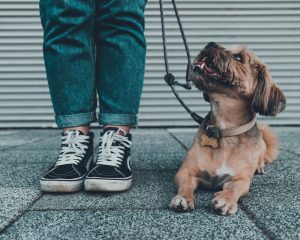Training your dog at home can be a fulfilling experience and save you some cash. But there are times when it just isn’t enough. DIY works wonders for teaching simple commands, especially if your dog is eager to learn with consistent practice.
However, when it comes to more complex behavioral issues, you might find that you need some structured guidance. Knowing when to seek professional help can really save you and your furry friend from a lot of frustration.
Reaching out for expert help doesn’t mean you’ve failed as a dog owner. In fact, it shows that you’re committed to your pet’s happiness and want to strengthen your relationship. This article discusses reasons to switch from self-training to professional supervision.
Failure to Obey Basic Commands
If your dog isn’t picking up on basic commands like sit, stay, or come, it might be a sign that your DIY training isn’t cutting it. It’s not always about your pet being stubborn or easily distracted; sometimes, it points to a gap in your training style, timing, or consistency.
According to PDSA, most dog owners dream of their little puppy growing up to be a well-mannered adult dog. There are a few essential commands that every owner should teach their furry friends. But figuring out where to begin can be a bit tricky. When you find yourself stuck in a cycle of trying the same things without seeing any improvement, it can lead to frustration.
It is the point where having expert guidance really makes a difference. Professional trainers are skilled at pinpointing the root causes of issues, whether it’s confusion, a lack of motivation, or even anxiety. They use specialized techniques to enhance learning and tailor the approach to fit your dog’s unique personality.
Signs of Fear or Anxiety
Fear or anxiety in dogs can manifest in various subtle yet significant ways. According to the American Kennel Club, when a dog is anxious, their attention tends to drift away from you and zero in on whatever is scaring them. It can be quite a struggle to regain their focus.
Dogs often shut down in fear, which hinders their ability to make the essential mental links needed for training. If you ignore the core problem, DIY methods can sometimes unintentionally lead those feelings to get even stronger. While patience and love are essential, they might not be enough without a solid understanding of canine behavior.
Professional trainers or behaviorists have a knack for identifying the root of a dog’s fear, whether it stems from past trauma or simply being in overwhelming environments. They employ gentle methods aimed at building confidence, easing stress, and slowly transforming fear into trust.
Aggression Toward People and Animals
If you notice aggression towards people or other animals, that’s a clear indication that DIY training might not be sufficient. It is essential to pay attention to warning signs such as growling, lunging, snapping, or biting.
Recently, an incident happened in Colorado Springs. According to KKTV, while responding to a barricaded suspect situation in Colorado Springs, an officer was bitten on the back of the calf by one of the dogs. The dog had to be shot to address the situation.
In situations where your dog bites someone, they can contact a personal injury lawyer in Colorado Springs. They deal with cases where unchecked aggressive behavior spirals out of control. As an owner, you may get into legal trouble.
Springs Law Group states that a person can be accountable for any losses resulting from their activities if they cause an injury via negligence. Proper training can help dog parents deal with canine aggression and prevent such problems.
A skilled trainer or behaviorist can put together a well-structured plan that emphasizes safety and positive reinforcement for your dog’s behavior. Getting help early on is crucial for protecting your dog, your family, and everyone else around you.
Excessive Leash Pulling
Your regular walks might become a headache rather than an enjoyable activity if you have to deal with a dog who pulls on the leash. Many pet owners resort to DIY tricks, like stopping in their tracks when their dog pulls or trying out various collars and harnesses.
While these strategies might work for some, persistent pulling usually indicates that your dog is either too excited or hasn’t learned proper leash etiquette. It can be incredibly frustrating and draining for both you and your furry friend when you keep trying without seeing any real improvement.
Getting expert help can really turn things around. Expert trainers are adept at determining if your dog’s actions are due to excitement, fear, or simply poor leash habits. They use methodical approaches to teach your dog how to stroll calmly. Getting professional support means your dog learns the right way without any added stress.
Destructive Behavior
Your patience could be put to the test by destructive habits such as tearing up your favorite things, digging up the yard, or chewing on furniture. PetMD notes that dogs can definitely cause chaos in your home and yard, especially depending on their breed and size.
While this can be frustrating, there are several reasons why dogs might act destructively. It can be a complex situation that may require an expert to help address any underlying anxieties. DIY training may temporarily help them change their behavior, but if the problem persists, it may cause annoyance and even damage to your house.
A skilled trainer can dig deeper and uncover the real issues at play. They can create routines that help redirect your dog’s energy into more positive activities. This proactive approach safeguards your belongings and fosters a happier, more relaxed, and well-adjusted furry friend.
FAQs
What trick should you not teach your dog?
One trick you definitely want to avoid teaching your dog is anything that might encourage aggressive behaviors, such as growling on command or biting tricks. These can create safety concerns and potentially lead to real aggression in everyday situations. Instead, focus on tricks that foster calmness and self-control.
What are negative dog training techniques?
Negative dog training techniques often rely on punishment or discomfort to curb unwanted behaviors. It can involve yelling, hitting, using shock collars, choke chains, and harsh corrections. Unfortunately, these methods frequently lead to fear, anxiety, and even aggression in dogs. Instead of fostering positive habits, they can erode trust and result in long-term behavioral issues.
How early should you start dog training?
The best time to begin training your dog is when you bring your puppy home, which is about 8 weeks of age. At this early stage, the focus is on socialization, teaching basic commands, and establishing routines. Puppies are like little sponges during this time, soaking up everything they learn and laying the groundwork for good behavior as they grow.
Recognizing the right moment to shift from DIY dog training to getting professional help is essential. Professionals provide specialized techniques, personalized advice, and safety-oriented strategies that you might not find in DIY approaches.
Deciding to work with a trainer is not a sign of failure. It is a testament to your commitment to your dog’s happiness and your own tranquility. Seeking expert assistance is one of the best choices you can make when your DIY training efforts fall short of your dog’s needs or your goals. It leads to a more joyful, healthier, and well-mannered companion.






